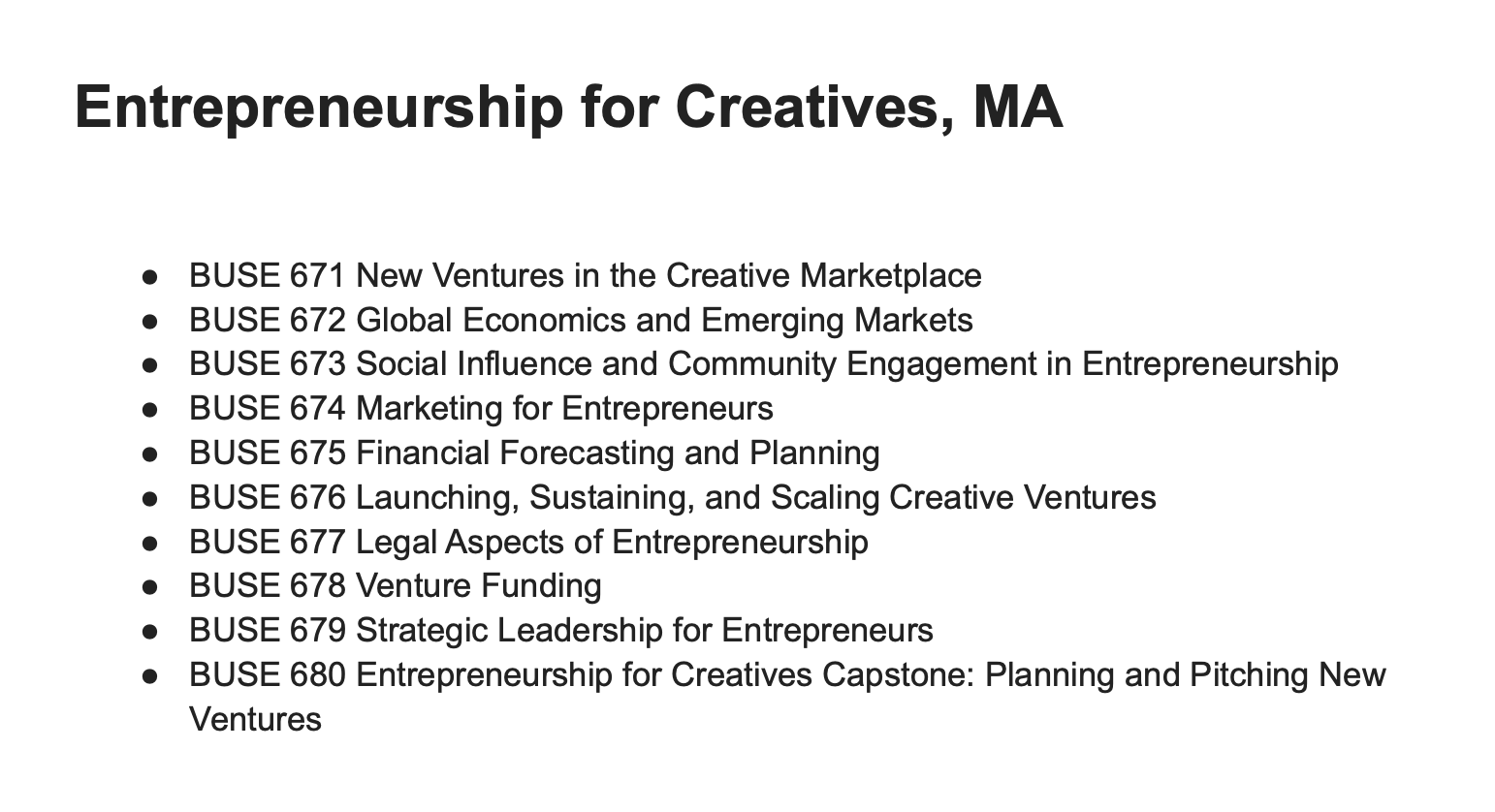
Entrepreneurship For Creatives Master’s Program Review
The Entrepreneurship for Creatives master’s program is set up so we take two classes every eight weeks. This of course means the classes are very fast-paced, covering a full semester in half the usual time. However, by focusing on only two courses at a time, it is possible to give each course the time and effort needed for success. The reason for this set-up is that the classes are sequential: you need to complete the first two before you move on to the next two, and so on. The courses feed off of each other and help you start a business from the ground up. By the end of the program, you are walking away with a solidified business plan and all the knowledge you need to start up your venture.
The first two classes were New Ventures in the Creative Marketplace and Financial Forecasting & Planning. The New Ventures class was basically a time to build our idea and start researching its potential for success. This included determining the minimum value proposition, finding our target market audience, evaluating possible competitors, developing pricing to evaluate profit margin and break-even, finding and listing possible fixed and variable costs, performing a SWOT (Strengths, Weaknesses, Opportunities, Threats) analysis, and finally putting together a summarized pitch deck. In Financial Forecasting, we learned how to make a number of different financial statements, record transactions, complete the entire accounting cycle, analyze cash flows, use financial analysis using ratios and financial forecasting, and eventually put together our own monthly/yearly budget predictions using market research. I am glad I took that course at the same time as the New Ventures class, because it allowed me to determine the predicted break-even, costs, and investment capital required for my start-up using my budget prediction research.
We are now in week five of our next second pair of courses, Global Economics & Emerging Markets and Legal Aspects of Entrepreneurship. In Legal Aspects, we started by submitting our business proposal from New Ventures. Since then, we have learned how to establish a board of directors, how to negotiate a lease, how to form business contracts and which ones our ventures will need, and we have started to outline our business plan. In Global Economics, we discussed the fundamental principles of macro-, micro- and behavioral economics as they apply to entrepreneurship within creative industries, and we are learning about the role of emerging markets in both international and domestic economies.

I am very excited to continue with next semester’s courses and see how I can apply them to my venture. So far, I am very impressed with how helpful these courses have been supporting me to form my business from the ground up!
